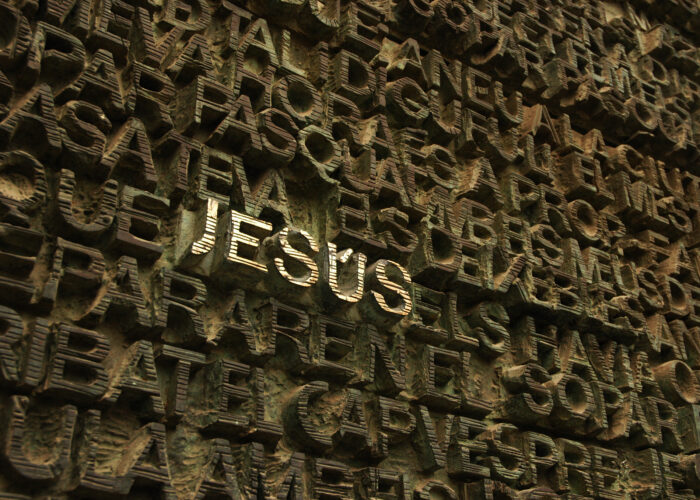Rooted in the prayer tradition of the Psalms where we are
reminded, “Be still and know that I am God” (Ps. 46:10), centering prayer is a
simple, wordless way of praying that makes space for simply being with God and
becoming more deeply aware of God’s presence.
Just as two people who are truly close friends do not need to spend all
their time talking when they are together, so the soul and God can enjoy a
quiet, deep communion that goes beyond words.
Not meant to replace other forms of prayer, centering prayer
is practiced not only for the intimacy with God it nourishes but also for the
fruits of love, joy, peace, and healing it produces. As those who practice centering prayer reach
a place of interior silence and peace, they are more and more able to turn away
from practicing violence and aggression in the world. They become “blessed peacemakers” who radiate
God’s love and peace.
To get started:
- Find a
place to pray that is quiet and relaxed. Sit in silence, breathing deeply and setting aside the concerns of
the day. If your body is tense,
spend some moments consciously relaxing each part of the body. - Focus
your attention on God. Become aware
of God’s presence surrounding you and allow yourself to be present to God. - Choose
a word for God as a focus for your prayer.
A one-syllable word works best—Love, Peace, Joy, Christ, Friend,
etc. Slowly and effortlessly, repeat the word until you become more and more deeply aware of God’s
presence at the center of your being. - Continue
to wait in God’s presence. If you
find yourself straying from your awareness of God or if other thoughts
intrude, gently return to the word you have chosen. Let God draw you into wordless communion
of adoration, love and praise. - When
your prayer feels complete, slowly leave the silence at the center and
return to words—perhaps offering the Lord’s Prayer as a conclusion,
savoring the words and meaning of the prayer.
Additional guidance:
Because many people have little practice with sustained
silence, centering prayer can begin with as short a time as 5-10 minutes. Later, it can expand to 20-30 minutes a day
(some prefer to spend time both morning and evening in centering prayer).
For many, a difficulty in the beginning is dealing with
stray thoughts or an undisciplined mind.
In his guide to centering prayer, Finding Grace at the Center
(St. Bede’s Publications, 1978), Thomas Keating offers helpful guidance:
In centering prayer…by turning off the ordinary flow of
thoughts, which reinforce one’s habitual way of looking at the world, one’s
world begins to change. It is like
turning a radio from long wave to short wave.
You may be used to a long wave set and the stations it picks up, but if
you want to hear stations from far away, you have to turn to the other wave
length. In similar fashion, if you turn
off your ordinary thought patterns, you enter into a new world of reality…Our ordinary thoughts are like boats sitting on a river,
so closely packed together that we cannot see the river that is holding them
up. We are normally aware of one object
after another passing across the inner screen of consciousness: thoughts, memories, feelings, external
objects. By slowing down that flow for a
little while, space begins to appear between the boats. Up comes the reality on which they are
floating.The prayer of centering is a method of directing our
attention from the boats to the river on which they are resting… At first you
are preoccupied with the boats that are going by. You become interested to see what is on
them. You must train yourself to let
them all go by. If you catch yourself
becoming interested in them, return to the sacred word you have chosen, which
expresses the movement of your whole being toward God who is present with you…A very delicate but intimate kind of self-denial is
necessary in this prayer. It is not just
an experience of rest and refreshment – a sort of spiritual cocktail hour. It involves the denial of what we are most
attached to, namely, our own thoughts and feelings – our very selves…This kind
of asceticism goes to the very roots of our attachment to our superficial
egocentric selves and teaches us to let go…This is not the time to be thinking about praying for
yourself or somebody else. You can do
that at another time… As you quiet down and go deeper, you may come to a place
that is outside time… When in the seed-bed of deep interior silence, the mustard
seed of divine charity has been sown by the Holy Spirit and begins to grow, it
creates within what the author of The Cloud of
Unknowing calls “a blind stirring of love”… The ripe fruit of this prayer
is to bring back into the humdrum routine of ordinary life, not just the
thought of God, but the constant awareness of God’s presence beyond any concept
(pp. 24-34).
Practiced regularly, centering prayer becomes a place of
integration and peace. It is the source
from which a faithful life of worship and obedience can grow as it prepares us
to “dwell in the house of the Lord” (Ps. 23:6) forever.




